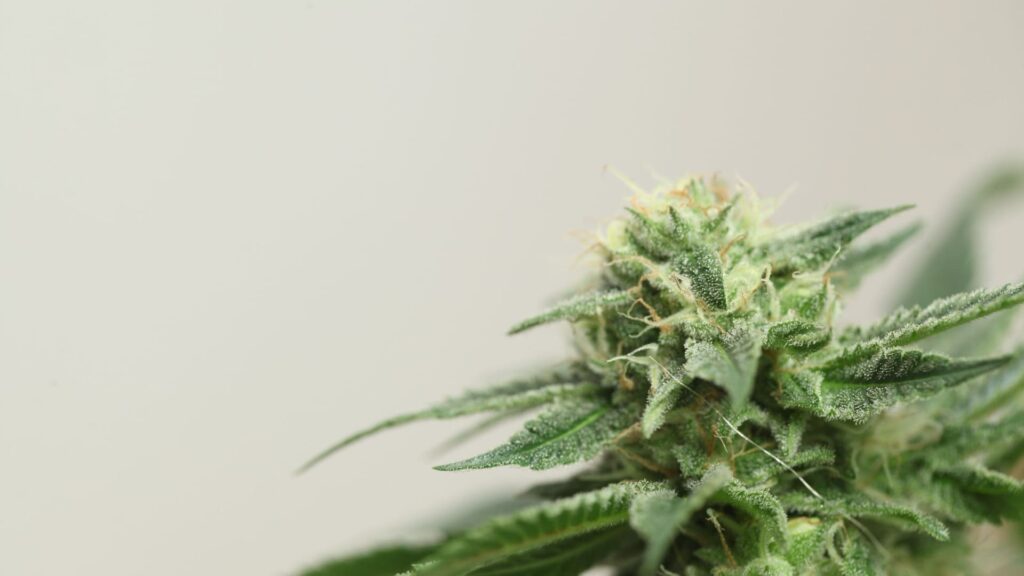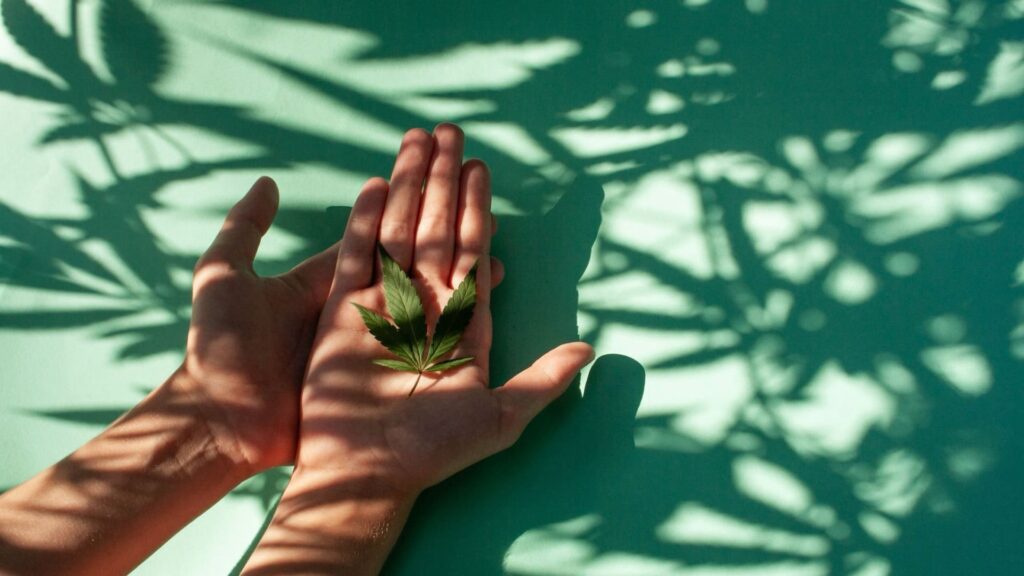While you already know that Ivy Hall is dedicated to elevating your cannabis sensory experience, we believe that educating yourself on cannabis and its varying strains can play a critical role in that quest. Even if you’re only a casual, once-in-a-while herb enjoyer, having a better understanding of cannabis, cannabis terms, and different cannabis products can help guide you to the right products. This, in turn, ensures that you have a great time whenever and however you choose to partake.
That’s why, today, we’re diving into a key cannabis question. That being, what’s the difference between indica and sativa strains? Additionally, many people wonder how these different strains affect them and why they need to know about them in the first place. Whether you’re a casual cannabis consumer, a budding bud aficionado, or a therapeutic medical marijuana user, knowing the effects, benefits, and defining characteristics of different types of cannabis strains can be extremely useful.
Indica vs. Sativa: What Does It Mean?
We know that cannabis culture and its terminology can be confusing for beginners. The indica vs. sativa vs. hybrid debate can easily go right over your head if you’re a cannabis newcomer. But don’t worry: Ivy Hall, our highly knowledgeable staff, and our informative website are here to assist you in your cannabis journey.
Even if you only have a passing familiarity with cannabis, it’s quite possible that you’ve at least heard the terms “indica” and “sativa” before. These are names for the two main categories of cannabis plants and, in turn, the two main categories of cannabis flower strains.
Let’s start by looking at the physical appearance of these plants and their flowers.
Indica Cannabis Plant Characteristics
- Shorter, bushier plants with dense foliage
- Broad, full leaves with wide fingers that may overlap
- Foliage is often a deeper, darker shade of green, sometimes even including red or purple tones
- Compact, tightly clustered flower sites with high resin content that are sticky and dense
- Shorter flowering period and growth cycle compared to sativas (often cultivated indoors)
- Resistant to cold temperatures and harsh weather
Sativa Cannabis Plant Characteristics
- Tall, thin plants with plenty of internodal space between branches
- Slender, thin leaves
- Often a shade of green that is paler, brighter, or yellower (but some strains do have an indica-like dark green)
- Wispy, elongated flowers that will feel softer and lighter than a premium indica bud
- Longer-flowering strains that thrive in warm climates
In summary, a sativa plant has an appearance that is long, slender, and bright, while a typical indica is squatter and thicker, often in addition to having deeper, darker colors. In fact, healthy, full-grown indica plants of some strains can be as short as three feet. However, they often have significant amounts of horizontal growth and various thick flower sites to make up for their modest stature. Conversely, many sativa strains grow incredibly tall, with heights reaching ten feet or higher in outdoor settings.
Indicas vs. Sativas: What Effects Do They Produce?

While we believe cannabis is a beautiful plant, we know you didn’t come here simply to look at its flowers and leaves. First, it’s important to remember that everyone’s body chemistry is unique and will, therefore, respond differently to the various psychoactive and non-psychoactive compounds found in cannabis. Because of this, you can educate yourself on the average experience that different people have while using a strain, but you should never expect it to match your experience completely. As you continue to try new strains and products, you’ll slowly find what works best for you.
Below, you can find everything you might need to know about the varying strains of cannabis and their different benefits.
Benefits of Indica Strains
A fun mnemonic device you can use to remember the effects of indica strains is “in da couch.” This is a reference to the sedative and sleep-inducing properties of powerful indicas. Although this “couch lock” sensation can be significant, especially if you overdo it with a particularly strong indica, you don’t really need to be worried that smoking, vaping, or eating indica is going to work like some kind of magic sleeping potion and take you out of commission before you can enjoy the experience. Plenty of cannabis users rely on their favorite indica strains for enhancing a variety of daytime activities as well, although this is definitely not for everyone, and the activities in question tend to be low-key and not physically demanding.
Benefits of Sativa Strains
Sativa strains, on the other hand, are more often associated with daytime use, with their effects often described as “energizing” or “inspiring.” Some folks even like to incorporate sativa strains into their exercise routine, often as a post-workout recovery supplement that helps them relax and wind down without sapping their energy levels.
Both types of strains are used in therapeutic applications, as both have anti-inflammatory and potential anxiety-relieving properties. So the short version is that indica’s sedative properties will keep you “in da couch,” while a good sativa will lead to a more uplifting and energizing experience. In practice, it can be a lot more nuanced than that, as each individual strain has its own unique composition of THC, CBD, other cannabinoids, and terpenes.
Understanding Hybrid Cannabis Strains
By now, you may have already figured out that hybrid strains are what they sound like – the result of crossbreeding indica and sativa strains. The particular benefits of hybrid strains can vary widely from strain to strain, as cultivators aim to isolate and pass down particular effects or flavor profiles from each parent strain.
The basic idea behind hybridized cannabis plants is to blend genetics from carefully selected parent strains and then crossbreed them to maximize potency, flavor, and effect. When done successfully, hybridization is able to capture the best of both strains, offering a diverse range of effects to suit various preferences and usage scenarios.
If you’ve spent any time in the cannabis community, you may have heard that hybridization has made the sativa vs. indica debate irrelevant because almost all of the potent, commercially available strains on the market today are actually hybridized to some extent. While hybrids have indeed exploded in popularity and profile over recent years, this statement is an oversimplification. While many of today’s high-end cultivators are indeed in the business of creating powerful hybrid strains that offer the best of both worlds, there are many other professionals in the cannabis growing industry dedicated to preserving the unique properties of the beloved pure sativa and pure indica strains.
So, while the classic “sativa vs. indica” conversation is still important, the rise of hybrid strains adds significant complexity to the topic. Thankfully, many hybrids are marketed as “indica leaning” or “sativa leaning” so that you can be more confident about their potential effects when making a purchase. When in doubt, one of our talented Ivy Hall budtenders can walk you through the properties of the many high-end hybrid strains we carry.
The Role of Cannabinoid Ratios

To better grasp the differences between indica and sativa strains, we should move on to exploring the topic of cannabinoids. The two most talked-about (and arguably most important) cannabinoids in a cannabis plant are THC (tetrahydrocannabinol) and CBD (cannabidiol). THC is responsible for cannabis’s signature psychoactive effects, while CBD provides non-psychoactive pain relief and other therapeutic properties. CBD is also believed to temper or regulate the effects of THC to some extent.
Because of the powerful sedative “high” that is associated with indica strains, many people are surprised to learn that it’s actually sativa strains that have a higher average ratio of THC to CBD. It is this high level of THC that is responsible for the powerful mental boost you get from your favorite sativa. This can come in the form of a creative burst, an uplifted mood, or a more sociable feeling. Meanwhile, the additional CBD in your indica strain contributes to a full-body relaxation experience, which is where you get that couch-lock effect we discussed earlier. Hybrid strains aim to find a sweet spot between the two, offering a tailored balance of cannabinoids to suit the preferences of the most discerning consumers.
While THC and CBD are the most discussed, remember that there are many other cannabinoids present in cannabis plants of all types. These can include, but are not limited to:
- CBN
- CBG
- CBGA
- CBDA
- THCV
- CBC
Each of these compounds carries its own unique properties, and preliminary research sees medicinal potential in many of them. Each different strain–whether indica or sativa–will have slightly different levels of these compounds. This means that finding the right strain isn’t always a simple matter of identifying the THC-to-CBD ratio that works best for you, especially if you are turning to cannabis for a specific therapeutic need.
Turning to Terpenes
To make matters even more complex, cannabinoids are not the only compounds within a cannabis flower that have therapeutic properties. Terpenes are best known in the cannabis world for giving flower its signature scent, but it also goes much deeper than that. There are over 200 different terpenes that can be found in cannabis plants, and each one has its own unique properties.
There’s a myriad of great terpene information out there if you want to dive into this fascinating niche of cannabis lore, but for the purposes of today’s guide, let’s examine a handful of the most prevalent cannabis terpenes:
Myrcene
Known for the earthy, musky aroma that gives cannabis its signature “dank” quality, myrcene also presents herby and tropical tones to discerning noses. In the therapeutic realm, myrcene is being looked into for a range of potential effects and may play a role in boosting the sedative, muscle-relaxant, and anti-inflammatory properties of cannabis.
Limonene
Best recognized for its bright and energizing lemon-lime aroma, limonene is believed to have various mood-enhancing and stress-busting properties. You’ll know it best from citrus fruits and lemongrass.
Linalool
This terpene has a profile that is floral and slightly herby, often drawing comparisons to lavender. This stands to reason, as lavender is another flower where linalool is found in abundance. It is thought to contribute to the stress relief and anti-inflammatory properties of cannabis.
Pinene
True to its name, this terpene is the origin of the unmistakable essence of pine trees, and, yes, it is also found in cannabis. In terms of therapeutic properties, pinene is often associated with boosted mental properties like awareness, alertness, and overall cognitive function. Pinene has also been known to exhibit potential as a bronchodilator, although smoking cannabis is decidedly not a great course of action for someone seeking a remedy for difficulty breathing.
Caryophyllene
If your favorite cannabis strain has a distinctive spicy or peppery note to it, this is likely due to significant caryophyllene content. Like many cannabis-derived terpenes, caryophyllene is valued for anti-inflammatory pain relief properties, although it may also have potential applications soothing digestive discomfort or even as a mild natural antidepressant.
Humulene
Another “dank” one with a woody, earthy profile, humulene is the signature scent behind hops as well as a contributor to the complex bouquet of cannabis. Humulene is known to be a natural appetite suppressant, so high-humulene strains may help to counteract those powerful “munchies” cravings brought on by THC’s appetite-inducing properties.
What does all of this terp talk mean in the context of today’s indica vs. sativa discussion? Mainly, it’s a reminder that choosing the right flower strain or vape cartridge can be about so much more than indica vs. sativa vs. hybrid once you start doing research and understanding cannabis. For some modern cannabis consumers, especially those who enjoy savoring the smells and flavors of cannabis, terpene content can be an even more important factor than the type of cannabis strain.
Ivy Hall: Your Trusted Guide for Great Cannabis Consumption Choices

Now that you know a little bit more about indicas, sativas, and hybrids – and even a thing or two about cannabinoids and terpenes – it’s time to put that knowledge to work in the real world. There’s no better place to do so than one of Ivy Hall’s palatial Chicago cannabis dispensaries.
Reading is a great way to empower yourself as a cannabis consumer but to truly complete your research; you’ll want to try a variety of products so that you can nail down the perfect cannabis strain for your own needs. Ivy Hall has friendly and well-trained budtenders on staff who can help you find the perfect product to meet your needs. Come pay us a visit whenever you’re ready to transition from research mode to shopping mode.
If you’re still unsure whether you prefer indica or sativa, you’ll be happy to know each Ivy Hall dispensary location is stocked with products of all types, so you can try both as many times as you need.



